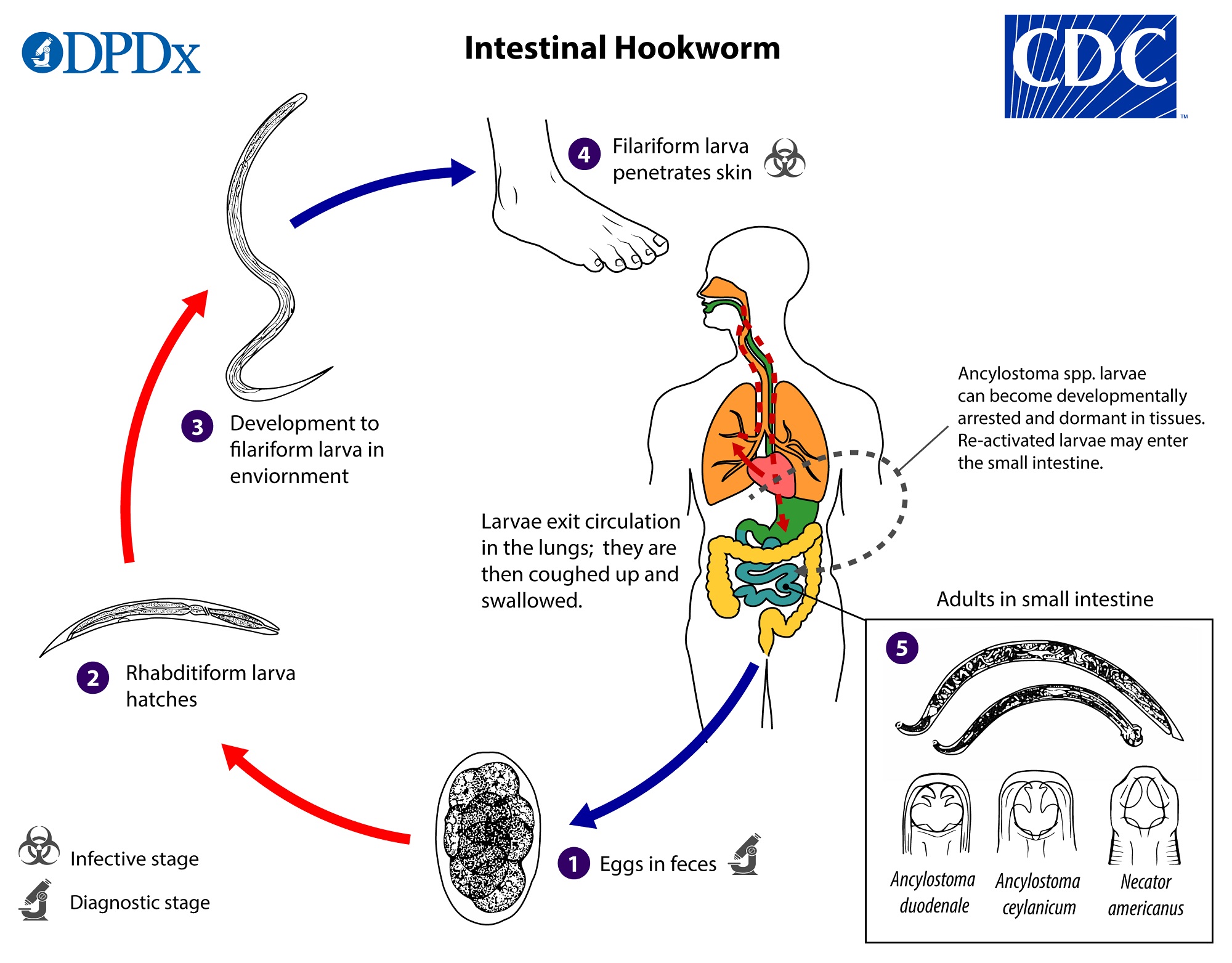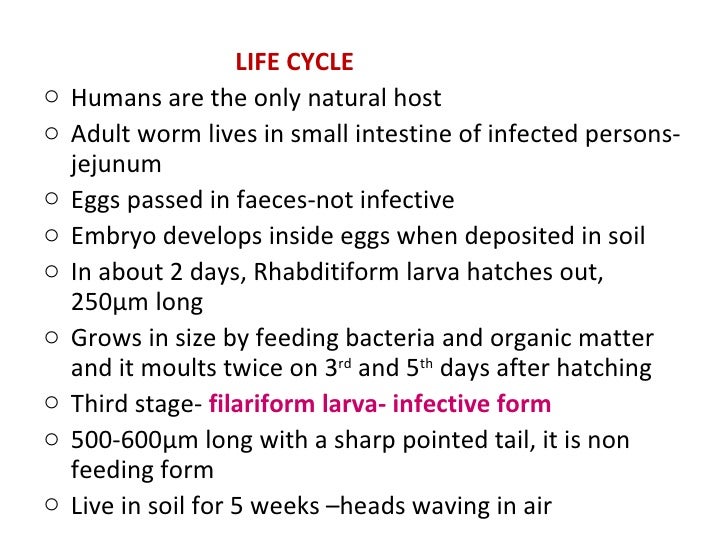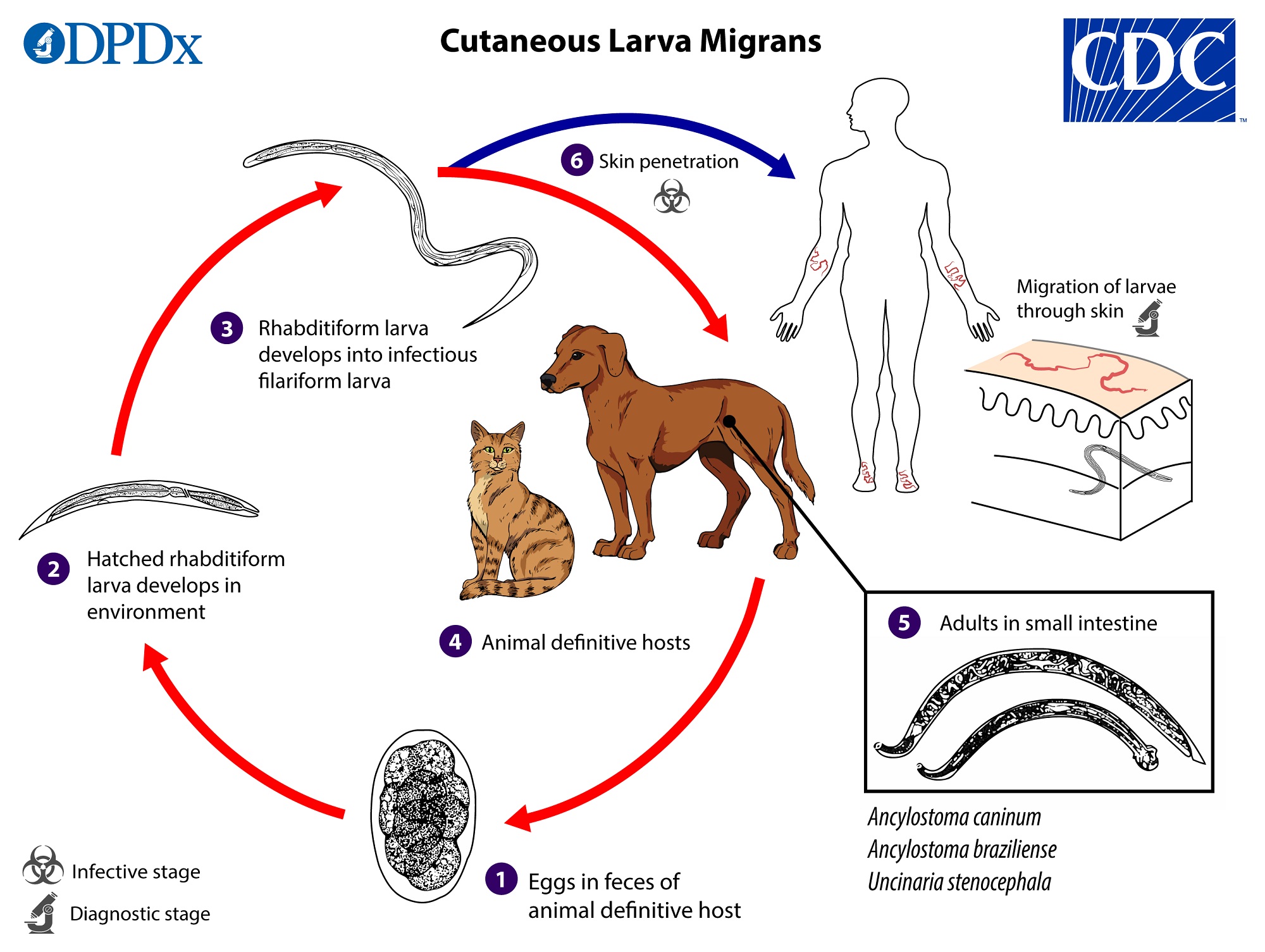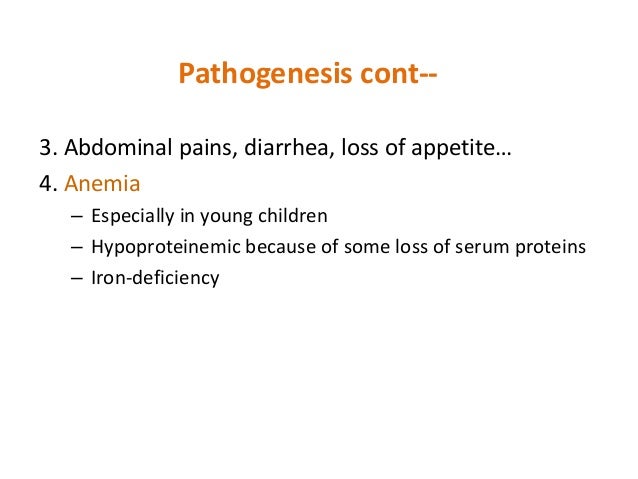98 Best of Pathogenesis Of Ancylostoma Duodenale
Pathogenesis of ancylostoma duodenale Hookworm infection in humans is caused by an infection with the helminth nematode parasites Necator americanus and Ancylostoma duodenale. Necator americanus Ancylostoma duodenale also known as the old hookworm is a common hookworm of human.
 Ancylostoma Duodenale An Overview Sciencedirect Topics
Ancylostoma Duodenale An Overview Sciencedirect Topics
Duodenaleis transmitted orally the early migrations of the larvae cause Wakana disease which is characterized by nausea vomiting pharyngeal irritation cough dyspnea and hoarseness.

Pathogenesis of ancylostoma duodenale. Ancylostoma duodenale is the causative agent for the disease Ancylostomiasis or Hookworm disease. The infection normally takes place when farmers working in coffee banana sugarcane sweet potato rice and maize fields expose their bare feet to the soil fertilized with human excreta where the infective larvae penetrate the skin and enter the blood circulation. These larvae are capable of re-activating and establishing patent intestinal infections. Pathogenesis of ancylostoma duodenale
In addition infection by A. The haematophagous appetites of these 4 hookworms constitute the primary pathogenic mechanism of ancylostomiasis. By radioisotope tracer techniques it has been shown that the 3 hookworms which infect man Ancylostoma duodenale Necator americanus and Ancylostoma ceylanicum and 1 Ancylostoma caninum of the 3 in dogs are prodigious blood-suckers. Pathogenesis of ancylostoma duodenale
Duodenale may probably also occur by the oral and the transmammary route. Organisms that play a lesser role include. Symptoms include rash at the site of larval entry and sometimes abdominal pain or other gastrointestinal symptoms during early infection. Pathogenesis of ancylostoma duodenale
However Ancylostoma doudenale or Old World hookworm parasitizes the intestine of man. Ceylanicum and Necator americanus commonly known as hookworms in the intestine of human. Later iron deficiency may develop because of chronic blood loss. Pathogenesis of ancylostoma duodenale
The pathogenesis and mode of entrance of the larvae into man was worked out by Looss in 1898. The infective larvae cause some kinds of eruption of the skin which may be pustular known as ground-itch. Intestinal hookworm disease in humans is caused by Ancylostoma duodenale A. Pathogenesis of ancylostoma duodenale
Hookworms Necator and Ancylostoma are generally contracted by walking barefoot on soil contaminated by feces from infected animals or persons or by swimming or wading in contaminated water. Americanus being the predominant species. Ancylostoma the common hookworm of man was first discovered in 1838 by an Italian physician Dubini. Pathogenesis of ancylostoma duodenale
Ancylostoma duodenale HookWorm full lecture in HindiHiI Am PremBhatiawelcome to our you tube channelin this video we learning to Ancylostoma duodenalec. Ancylostomiasis is infection with the hookworm Ancylostoma duodenale or Necator americanus. It occurs during the dissemination of larvae that follows every infection as well as after reactivation of resting somatic larvae in the bitch at the end of the pregnancy. Pathogenesis of ancylostoma duodenale
It causes ancylostomiasis in humans characterized by non-deficiency anemia and hypoalbuminemia. NEET-PG AIIMS DNB CET FMGE USMLE Review By Tanmay MehtaHookworm is an important cause of iron. Ceylanicum and Necator americanus. Pathogenesis of ancylostoma duodenale
Ancylostoma duodenale Also called old world hookworm Causes ancylostomiasis Dubini in 1843 described the parasite Arthur Loss in 1896 described pathogenesis and mode of infection 4. Geographical Distribution of Ancylostoma Duodenale. Hookworm disease from Necator americanus and Ancylostoma duodenale affects approximately 700 million people with N. Pathogenesis of ancylostoma duodenale
Symptom of ancylostomiasis start with the ground itch occurring during the penetration of skin by filariform larvae. Human hookworm disease is a common helminth infection that is predominantly caused by the nematode parasites Necator americanus and Ancylostoma duodenale. Infections with Ancylostoma caninum are transmitted orally or percutaneously. Pathogenesis of ancylostoma duodenale
The hosts infected with adult worms become anaemic as a result of considerable loss of blood from the intestinal wounds. EPIDEMIOLOGY Globally 900 million people infected. Pathogenesis of Ancylostoma Duodenale. Pathogenesis of ancylostoma duodenale
From an investigation of 73 infected and 132 uninfected subjectSj the main conclusions drawn were as follows a Hookworm load estimated by faecal egg count did not correspond with anaemia although infected subjects looked yellow. Unlike other pathogens eg bacterial infections where virulence is described in regards to acute pathogenesis and case-fatality hookworms are well-evolved multicellular parasites that establish long-term infections in their human hosts with a subtle and chronic but insidious pathogenesis usually in the form of iron. Duodenale larvae following penetration of the host skin can become dormant hypobiosis in the intestine or muscle. Pathogenesis of ancylostoma duodenale
Be transmitted through penetration of the skin whereas Ancylostomacan be transmitted percutaneously orally and probably transplacentally. Necator americanus also known as the New World hookworm is another cause of hookworm disease in humans. The transmission of infectious stages with the milk of particular importance for the distribution of the species. Pathogenesis of ancylostoma duodenale
The hookworm disease is caused by the blood sucking nematodes Ancylostoma duodenale A. Pathogenicity of Ancylostoma Duodenale. Hookworm infection is common in the heavily populated island of Madeira but the parasite load is usually light. Pathogenesis of ancylostoma duodenale
 Hookworm Infection Molecular Mechanisms Of Disease And Targets For Control Sciencedirect
Hookworm Infection Molecular Mechanisms Of Disease And Targets For Control Sciencedirect
 Parasitology Intestinal And Atrial Protozoa Parasite Drawings Flashcards
Parasitology Intestinal And Atrial Protozoa Parasite Drawings Flashcards
 Rosh Review Medical Surgical Nursing Medical Symptoms Medical Laboratory Science
Rosh Review Medical Surgical Nursing Medical Symptoms Medical Laboratory Science
 Order Strongylida Hookwormshookworms Necator Americanus Americas Africa Asiaamericas Africa Asia Ancylostoma Duodenale Europe Northern Africa Asia Ppt Download
Order Strongylida Hookwormshookworms Necator Americanus Americas Africa Asiaamericas Africa Asia Ancylostoma Duodenale Europe Northern Africa Asia Ppt Download
 Retortamonas Intestinalis Intestinal Flagellate Protozoa Sarcomastigophora Sarcodina Movement Morphology
Retortamonas Intestinalis Intestinal Flagellate Protozoa Sarcomastigophora Sarcodina Movement Morphology
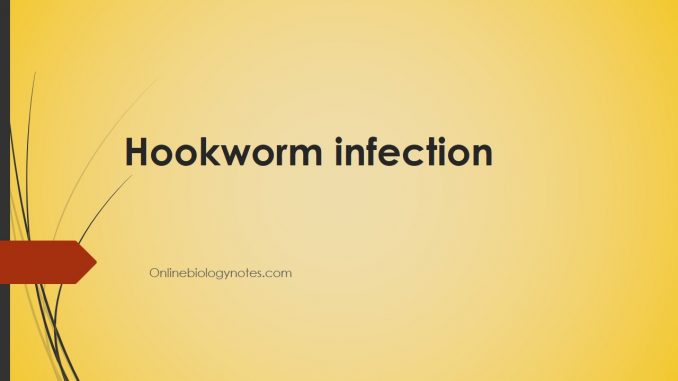 Hookworm Infection Life Cycle Transmission Pathogenesis Diagnosis And Treatment Online Biology Notes
Hookworm Infection Life Cycle Transmission Pathogenesis Diagnosis And Treatment Online Biology Notes
Http Epgp Inflibnet Ac In Epgpdata Uploads Epgp Content S000035zo P000888 M020583 Et 1498560809lifecycleancylostomaduodenalequad1 Pdf
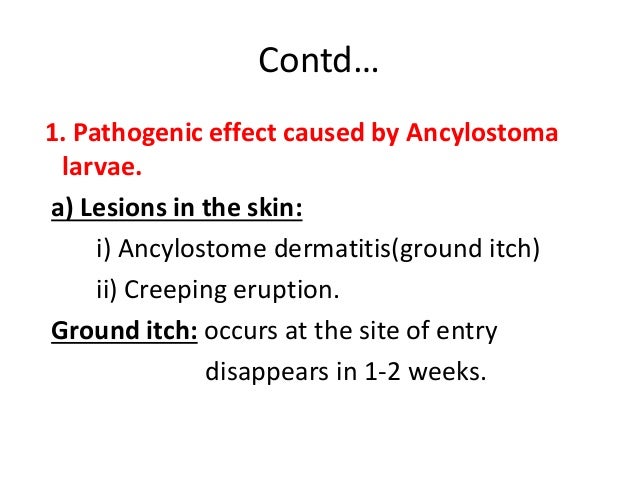 Ancylostoma Duodenale Hookwormi 2015
Ancylostoma Duodenale Hookwormi 2015
 Ancylostoma Duodenale Hook Worm Habit Life Cycle Pathogenesis Lab Diagnosis Treatment In Hindi Youtube
Ancylostoma Duodenale Hook Worm Habit Life Cycle Pathogenesis Lab Diagnosis Treatment In Hindi Youtube
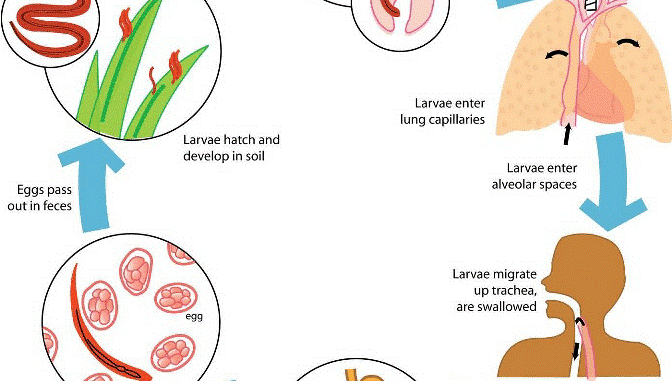 Hookworm Infection Ancylostoma Duodenale Necator Americanus Classification Lifecycle Clinical Manifestation Laboratory Diagnosis Of Hookworms The Science Notes
Hookworm Infection Ancylostoma Duodenale Necator Americanus Classification Lifecycle Clinical Manifestation Laboratory Diagnosis Of Hookworms The Science Notes
 Difference Between Ancyclostoma Duodenale And Necator Americanus Online Biology Notes
Difference Between Ancyclostoma Duodenale And Necator Americanus Online Biology Notes
 Ancylostoma Braziliense Watercolor Tattoo Tattoos Watercolor
Ancylostoma Braziliense Watercolor Tattoo Tattoos Watercolor
